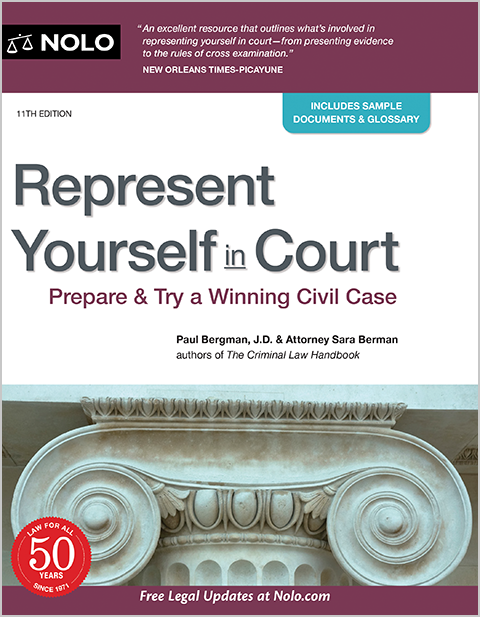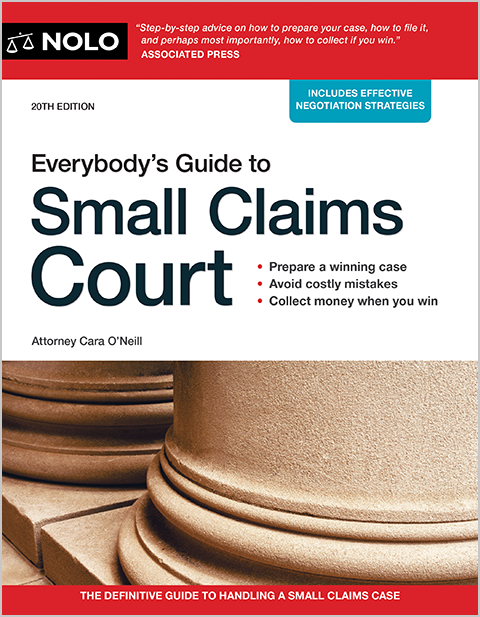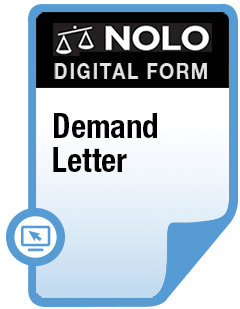You got a New York money judgment. Now, it's time to collect. We explain how to record New York judgment liens, collect on a lien, extend your judgment, and more.
You went to court and got a judgment that says you're entitled to money from the party you sued, now called a "judgment debtor." What comes next? How can you—the judgment creditor—collect the money you're due? That's the focus of this article.
One way to collect is by putting judgment liens on the judgment debtor's New York property. After a quick review of how judgment liens differ from judgments, we'll turn our attention to the specifics of New York law. In particular, we cover:
- the kinds of property subject to New York judgment liens
- how you put judgment liens on New York property
- how long your judgment lien lasts and how you can extend it, and
- the ways you can turn your judgment lien into money.
If you want some background information, here's more about how court judgments are collected.
- What's the Difference Between a Judgment and a Judgment Lien?
- Kinds of Property Subject to New York Judgment Liens
- How to Attach Judgment Liens to Real Estate
- Attaching Judgment Liens to Personal Property
- How Long Does Your New York Judgment Last?
- How Do You Turn a New York Judgment Lien Into Money?
- Next Steps
What's the Difference Between a Judgment and a Judgment Lien?
A judgment is a court order that says a judgment creditor is legally entitled to a sum of money from a judgment debtor. But a judgment, standing alone, isn't self-enforcing. That is, you can't take a judgment to your county sheriff's office and demand that the judgment debtor's real estate be sold to pay you.
If you want to seize and sell the judgment debtor's property, you first have to attach your judgment to specific items of property. That's what a judgment lien does. As we'll see below, once you take the correct steps to record your judgment, it becomes a lien against the judgment debtor's property. At that point, you can look for ways to turn your judgment into cold, hard cash.
Kinds of Property Subject to New York Judgment Liens
In New York, you can attach judgment liens to real estate—land, buildings, and other improvements—and to personal property like cars, artwork, antiques, and jewelry.
When you properly record a New York judgment lien (see below), it attaches to:
- real estate the judgment debtor owns at the time the lien is created, and
- real estate the judgment debtor later acquires, as long as your judgment lien remains valid.
A judgment lien attaches to personal property when "execution"—an order to seize and sell that property—is delivered to the sheriff. We explain below.
Note, importantly, that a judgment lien won't attach to property that New York exempts from the reach of creditors. Here are a few examples of New York's real estate and personal property exemptions:
- property used as a primary residence, ranging in value from $75,000 to $150,000 over the total of all liens
- one motor vehicle, up to $4,000 in value over all liens
- tools of the trade, machinery, farm implements, and professional books with a value of up to $3,000
- wearing apparel, furniture, one refrigerator, one television, and one computer, and
- religious texts, pictures, and school books, all valued at not more than $500
How to Attach Judgment Liens to Real Estate
The procedure for getting a judgment lien on New York real estate depends on:
- the court where your judgment was entered, and
- the county where you want a lien to attach.
Judgment Entered in County Where You Want a Judgment Lien
Let's begin with judgments entered in the same county where you want a judgment lien. The steps you need to follow depend on whether your judgment was entered in the county's supreme court—the main trial court—or a different court.
Judgment in the County's Supreme Court
Suppose you sued in the Rockland County Supreme Court. You won a judgment. You want a judgment lien in Rockland County because the judgment debtor owns a rental property there.
Good news: You don't need to do anything. The Rockland County Supreme Court clerk—called the "county clerk"—will automatically "docket" (record) your judgment in the county docket book. Once that's done, you have a judgment lien against the judgment debtor's Rockland County real estate.
Judgment in Any Other Court
Now, let's say you win a judgment in any other Rockland County court—maybe the small claims court. How do you turn your small claims judgment into a judgment lien?
First, go to the small claims court clerk's office. Tell them you want a "certified judgment transcript." What you're asking for is a summary, certified as authentic, of your judgment. The clerk will give you a transcript request form. Fill it out, pay a small fee, and you'll get a certified transcript.
Next, take the transcript to the county clerk's office and ask them to docket it in the county docket book. You'll pay a nominal docketing fee. When the transcript is docketed, you've got a Rockland County real estate judgment lien.
Judgment in Any Other County
Finally, assume your judgment is from a court situated in any New York county other than Rockland County. Maybe you got a judgment in the Queens County Supreme Court. You still want a Rockland County judgment lien. The process here is the same as described above.
Get a certified transcript of your judgment from the Queens County Supreme Court clerk's office. Have the county clerk in Rockland County docket it in the county docket book, and you've got a Rockland County judgment lien.
Do Your Homework Ahead of Time
Before you do anything, check the clerk's office website or give them a call. Find out if they have online forms you can use, and get details regarding their procedures. For example, you might be able to complete web-based forms and submit them electronically. Or there might be a delay in producing your judgment transcript. A little advance preparation will help to make things go more efficiently.
Attaching Judgment Liens to Personal Property
Before you start, speak to a New York collection lawyer. They can tell you whether it's worth your time and expense to go after the judgment debtor's personal property—and there's a good chance it won't be. If it's likely to be worthwhile, they'll guide you through the process.
To attach a lien to personal property, start by making sure your judgment or a certified judgment transcript is recorded in the docket book for the county where you want a lien, as described above.
Next, you'll need to identify the property you want to have seized. You're looking for big ticket items like cars, trucks, motorcycles, and boats. It probably doesn't make sense, cost-wise, to go after household goods and other low-value property. Trying to locate and seize moveable property often ends up being a frustrating, cat-and-mouse game.
If you find property, ask the clerk of the court that entered your judgment to issue a writ of execution, an order directing the sheriff to "levy" (seize) and sell it. A judgment lien attaches to the judgment debtor's personal property when the writ issues. Should the sheriff actually locate and levy property, they'll sell it and distribute the proceeds to creditors in order of their payment priority.
How Long Does Your New York Judgment Last?
A New York judgment is good for 20 years from the date it was entered, longer if the judgment debtor acknowledges the debt in writing or makes a payment on it. A judgment lien only lasts for 10 years from the date the judgment was first docketed, creating the lien. You're allowed to renew a judgment lien for another 10-year period. Here's an overview of the process.
Within one year before the 10-year lien period expires, you must file a new action asking that the judgment be renewed. To keep your place in the payment priority line, it's critical that your judgment and all liens are renewed before your original judgment lien lapses.
Here too, you'll want help from experienced counsel. New York lets judgment creditors use a special form of action, called "summary judgment," to renew a judgment. A collection attorney will be familiar with this procedure, and can handle the case for you.
Unless the judgment debtor has a defense—and there aren't many—the court will enter a renewed judgment. The court clerk dockets it as a renewed judgment, and your new judgment lien becomes effective on the expiration of the 10-year period of your original lien. You'll have to record a certified judgment transcript in any other counties where you want a judgment lien.
How Do You Turn a New York Judgment Lien Into Money?
In general, there are three ways you can try to collect on a New York judgment lien:
- negotiate a settlement
- wait for the judgment debtor to sell or refinance the property, and
- execute on your lien.
Negotiate a Settlement
If you want payment sooner rather than later, this is likely your best choice. No, you won't get all money you're entitled to, but that's the nature of a settlement. You'll collect faster—and more inexpensively—than via the other two options.
Wait for the Judgment Debtor to Sell or Refinance
Most often, a buyer or lender will insist on clear title, free of all judgment liens. So, to sell or refinance, the judgment debtor will have to approach you to make a deal. Only now, you've probably got more negotiating leverage. As long as you're willing to sit tight and wait, this too is a low-cost, low-stress way to collect.
Execute on Your Lien
Executing on your lien means having the sheriff sell the judgment debtor's property at auction. This might seem like a tempting option. But before you head down this path, check with the court clerk (or a local attorney) to find out about the legwork and costs involved. In addition, see who's ahead of you in payment priority, or you might discover—too late—that the sale proceeds aren't enough to pay you in full (or at all).
Lastly, be aware that this step might be just the push the judgment debtor needs to declare bankruptcy. Should that happen, you're likely to be standing in a long, very unhappy line of creditors with little chance of getting paid.
Next Steps
Want to have a look at New York's judgment lien laws? You'll find them at N.Y. C.P.L.R., Art. 52 (2025).
We've covered the basics, but of course, the devil's in the details. After reviewing New York's statutes, you might decide that your best option is to get help collecting your judgment. An experienced New York creditor's rights or collection attorney can answer your questions and help you chart a collection path that gives you the best chance to maximize your recovery.
- What's the Difference Between a Judgment and a Judgment Lien?
- Kinds of Property Subject to New York Judgment Liens
- How to Attach Judgment Liens to Real Estate
- Attaching Judgment Liens to Personal Property
- How Long Does Your New York Judgment Last?
- How Do You Turn a New York Judgment Lien Into Money?
- Next Steps



